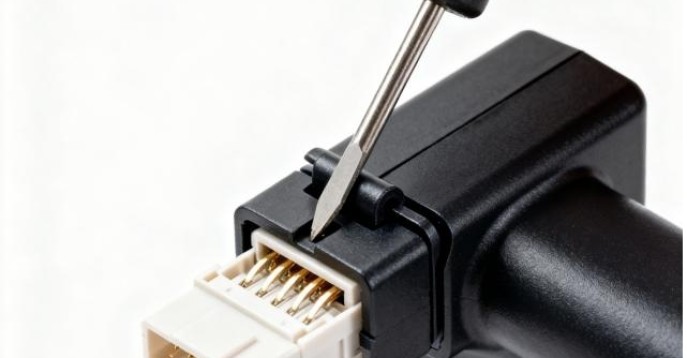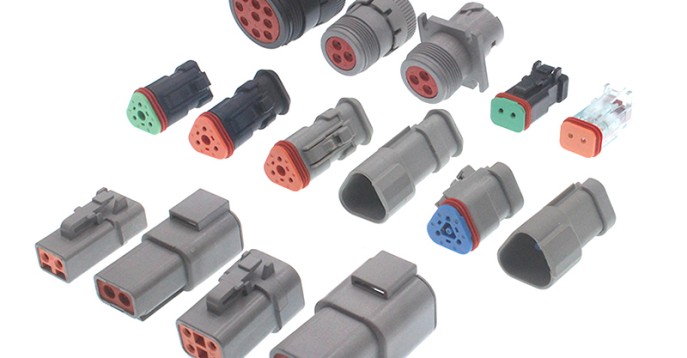It is well known that long battery charging time is one of the key factors restraining the growth of the electric vehicle market. Typically, electric vehicles require a few hours of charging time to gain range, while traditional gasoline-powered cars or trucks can be refilled with gasoline or diesel in a short period of time.
In order to shorten the charging time of electric vehicle batteries, electric vehicle manufacturers need to improve the ability of the circuits in the charging system to carry high voltage and high current, which relies on cables with high current carrying capacity. Therefore, wire harnesses with large cross-sectional areas are widely used to flow higher currents, and at the same time have good heat dissipation capacity, which is an effective method to improve the charging efficiency of electric vehicle batteries.
The current carrying capacity of high-voltage wiring harnesses for electric vehicles in the future will be four to five times that of existing ordinary electric vehicle cables. In terms of wire harness size, if copper is selected as the conductor material, the cross-sectional area of the wire harness used will increase from 50mm2 to 200mm2, or even higher.
However, how to reliably connect these larger cross-section cables is a major technical challenge for automakers. At the same time, the rapid update and iteration of electric vehicles has also brought about the exploration of technical points such as how to arrange and accommodate these cables, cable lengths, and low internal resistance connection processes inside the car. Ideally, the cable length should be as short as possible to obtain the performance of low internal resistance and low temperature rise. However, it is usually impossible to shorten the cable length inside the actual electric vehicle, so the cable diameter needs to be increased accordingly to ensure low internal resistance and good heat dissipation. As more and more battery modules are placed under the vehicle, larger cross-sectional wire harnesses or conductors need to be installed and routed around and under the passenger compartment. Therefore, the body structure must not only be insulated from cables and conductors, but must also safely dissipate the temperature rise that occurs in the wiring harness during fast charging.
Back to the technical challenges of the connection process, the ultrasonic metal welding process, as an efficient solid-phase connection process, has the advantages of short welding time, low internal resistance of the joint, and high mechanical strength, especially suitable for high-voltage connector systems. Welding of wire harness to wire harness or wire harness to terminal. However, the use of ultrasonic welding of high-voltage wire harnesses with large cross-sectional areas (≥50mm2) requires the use of very high-power equipment, and at the same time, the mechanical strength of the welded wire harnesses and connectors during use must be guaranteed. For wire harnesses with a cross-sectional area exceeding 50mm2, it is difficult for conventional ultrasonic metal welding equipment to achieve the ideal welding effect. When welding high-voltage wire harnesses, it is necessary to apply a large welding pressure. Since most of the conventional welding equipment is designed with a cantilever structure, the bending phenomenon of the actuator will occur, resulting in low welding energy conversion efficiency. In order to compensate for the loss of energy, the welding amplitude is usually increased. However, this not only fails to improve the problem, but also causes more serious problems. For example, a large amplitude will increase the internal core stress and may damage the wire harness, so that it cannot be achieved. Welding quality requirements required by automobile manufacturers.
Here we focus on the following problems caused by simply increasing the welding amplitude and equipment power in this application:
The resulting increased deformation and stress in the wire cores inside the wire harness can lead to reduced fatigue life and potential mechanical failure of the wire harness.
The relative movement distance between the welding head and the wire harness is increased, and the frictional heat energy will exceed the reasonable energy range required by the welding wire harness, which will cause the excess heat to not be diffused to other areas in time, resulting in a low utilization rate of ultrasonic welding energy. Welding efficiency drops.
The reliability and efficiency of the welding head are reduced. Excessive amplitude and power will cause the softening of the wire harness, and the softening during the welding process can easily cause the welding head to slip abnormally on the wire harness, aggravate the wear of the welding head, and increase the life cost of the welding head.
For the above-mentioned problems caused by simply increasing the welding amplitude and equipment power, the welding stability and energy conversion efficiency can also be improved by increasing the welding pressure. However, test results have shown that conventional cantilever ultrasonic metal welding machines exceed their mechanical design limits when welding harnesses larger than 50mm2.
In order to meet the technical challenges of high-voltage wire harness welding, a new welding structure is required to achieve higher energy conversion efficiency.














